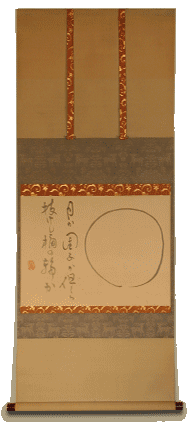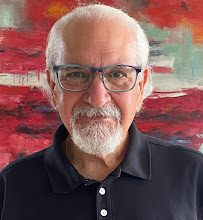 Zen Circles of Enlightenment
Zen Circles of EnlightenmentThis is an all-purpose enso: It can be the moon-mind of enlightenment, the true taste of Zen, or maybe nothing other than an old bucket that has lost its bottom. Different people see different things in an enso, but the Zen circle itself remains silent and unaffected by outside views.
About the Artist: Awakawa Koichi was a professor of economics who fell in love with Zen art. He built a Zen art gallery at his home, and his book Zen Painting introduced this wonderful art form to the world at large. Awakawa himself did zenga in the Sengai style: brushed in light gray shades with zany, cartoon-like composition.
Source: Shambhala

3 comments:
the circle is broken at the bottom. It is leaking. The quiet is broken by the words. The animals in the border are dancing or running. It isn't a quiet piece. Very interesting but not quiet. It has the mouth of river, rivers contunally talk, like the gossiping of the old hens.
Thank you for sharing this.
I guess zen painting is like haiku writing. It is not contrived.
Thanks for stopping by Travis.
Thanks Frida...interesting observations. People do see things different based upon who they are and the archetypal images that live inside them. The zen circle is different than the Native circle. Is it not?
Imemine...interesting observation about the two not being contrived.To contrive means to plan of design or invent or even to pre-meditate.
Post a Comment